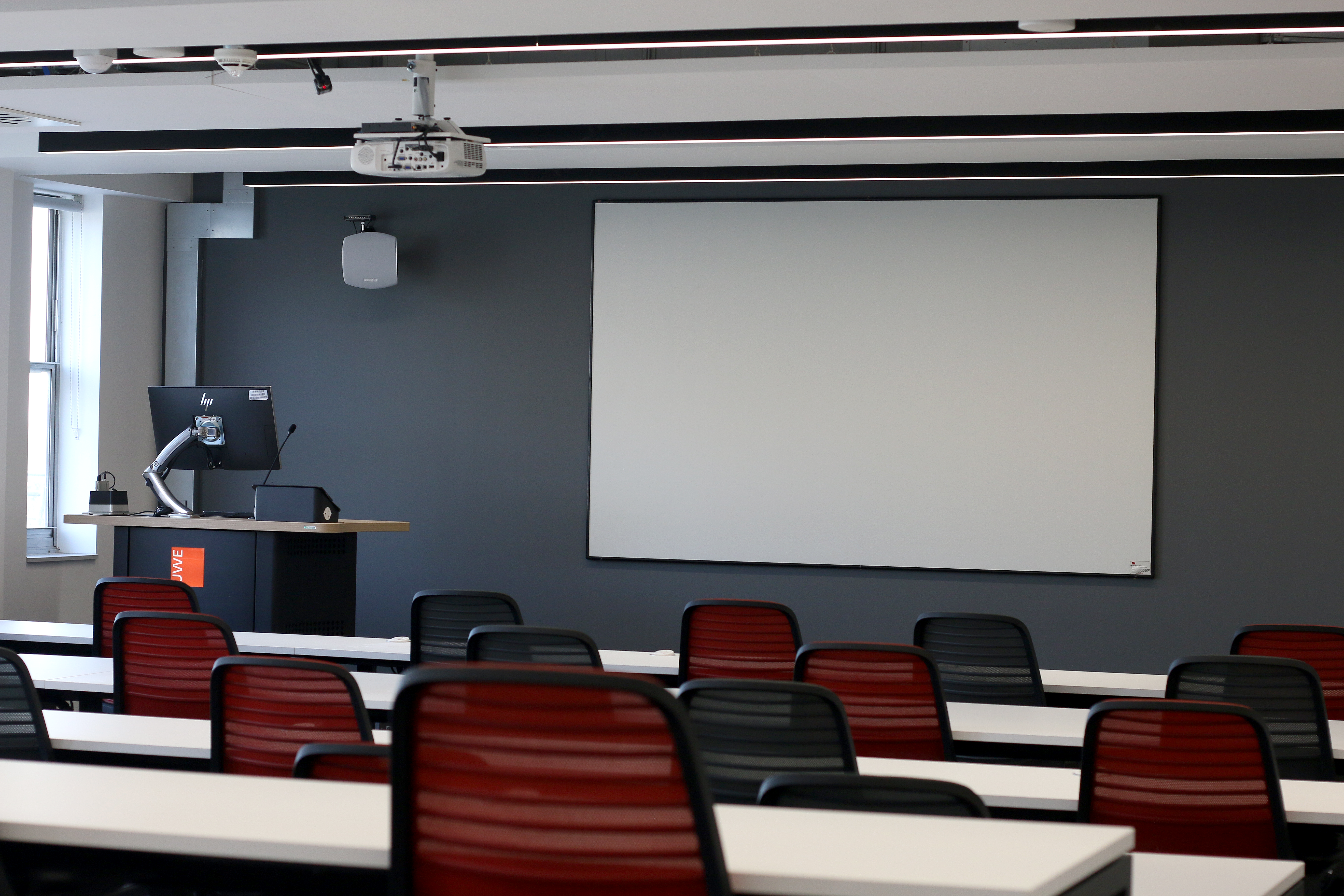
University of the West of England - Police Constable Degree Apprenticeship AV Installation
AV INSTALLED
Epson Projectors
Clock Audio Speakers
Extron Control
TOP-TEC Lecterns
TK Teams Projection Screen
The University of the West of England offers degree apprenticeships that combine on-the-job training with academic study. The Police Constable Degree Apprenticeship offers unique learning and practice opportunities that will enable officers in training to deliver a high-quality service in their communities. Developed through partnership with local constabularies, it directly reflects local and national policing priorities. As well as exploring everyday policing issues, the training provides officers with unique opportunities to learn and investigate future challenges, crime trends and technological advances.
To support with the on-going growth of this training program, the University required extensive AV solutions over two floors, including two 60-seater teaching rooms, two 60-seater collaborative teaching spaces and a selection of simulation police interview rooms. The systems had to comply with the University’s high standards, as well as promote supportability and easy remote maintenance for the University’s AV team.
The interview rooms required a talk-back system for the larger teaching spaces to communicate with their users, as well as view, record, and comment on the various exercises. The spaces needed to be viewable on both the main displays, as well as any of the collaborative spaces, in any variation.
.jpg)
Extron control for collaborative learning
GVAV utilised cutting edge AVoIP solutions in order to encode and transmit the interview rooms and teaching feeds into the designated network. Each lectern and the central rack were equipped with a Cisco switch to facilitate a fully matrix system, where any of the encoded feeds could be distributed to any of the displays within the flexible teaching spaces.
GVAV were able to utilise their strong Extron programming resources, to configure and control the equipment and present adequate control to the room’s user via an intuitive graphical interface, mounted onto the lectern housing. Each collaborative space required its own dedicated control panel, which formed part of a larger control system. This is in place of the older ways of working, where a system would need to utilise separate control interfaces. Thanks to Extron’s innovative EBUS solutions, GVAV were able to create one large control program that could distribute itself between 2 GUI interfaces, 12 button panels, 2 main processors and a single central processor.

Challenging AV installation spaces
Exposed ceilings within one room, provided aesthetic challenges due to the number of services required. Speakers and cameras had to be carefully planned and integrated in order to not interfere with other planned services and provide the expected aesthetic.
The main teaching room had several supporting pillars, that could not be moved or removed. GVAV needed to plan sight lines and viewing angles around these pillars, as well as consider their impact on the information uptake of the students within dead areas. GVAV provided the University with several options, including displaying the main display on each of the collaborative displays. Within the final system, GVAV utilised the collaborative screens as repeater monitors for the main displays to combat this.
The rooms were spread out across two floors, with limited risers between them and complicated power/data requirements to spread out across the floors. GVAV’s engineers needed to work between floors, and across a large area to deploy the specified systems without any loss in signal or interference from other services in the signal chain.
"I wanted to write to you regarding the exceptional install work completed at HAS PCDA. It is a shining example of what can be achieved when AV designers coordinate with architects, electrical engineers, and the contractor; a demanding undertaking at times, but the results speak for themselves.”
James Gray - The University of the West of England
